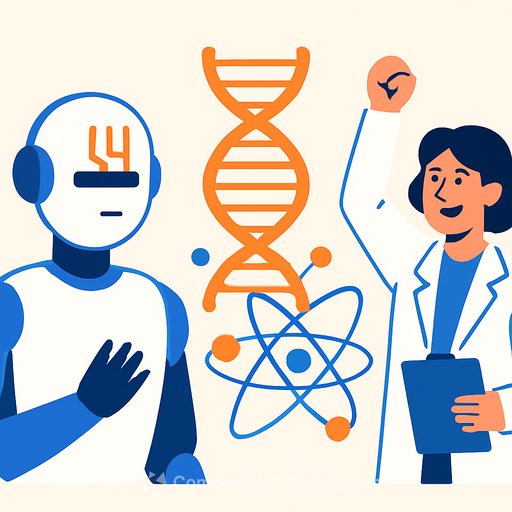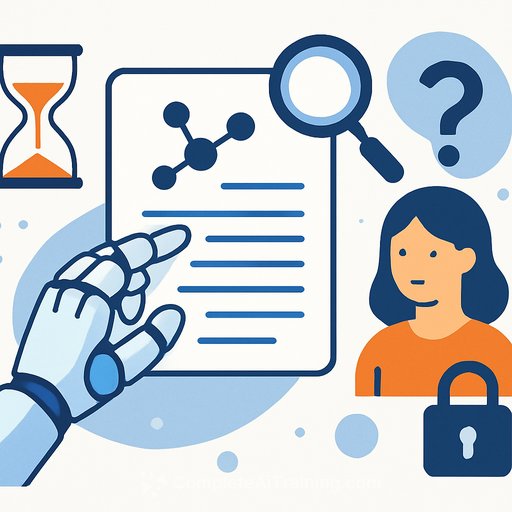AI Cracks Century-Old Physics Problem as Scientists Launch 'Google for DNA'
Two milestones signal a shift in how research is done: AI helped resolve a fundamental physics problem that resisted solution for decades, and scientists introduced a search engine for genetic code being called a "Google for DNA." Both point to faster cycles between hypothesis, computation, and validation, according to SciTechDaily.
AI solves a century-old physics challenge
Researchers applied AI to close a long-standing gap in theoretical physics. The system explored vast solution spaces, enforced physical constraints, and converged on a result that traditional approaches struggled to reach.
The signal for R&D teams: AI is moving from data cleanup and prediction into hypothesis generation and constraint-aware problem solving. Expect more work where models search, propose, and verify-tightening the loop between theory and experiment.
- Use AI to scan parameter spaces and prune dead-ends before allocating bench time.
- Combine symbolic methods with neural search to keep results interpretable and testable.
- Bake in unit checks, invariances, and conservation laws to avoid impressive-but-wrong outputs.
"Google for DNA" enters the lab
A new sequence search engine lets teams query immense genomic datasets for motifs, variants, and structural patterns in seconds. Think BLAST-like utility at broader scale, integrated with modern indexing and faster retrieval; for reference, see NCBI BLAST.
The immediate upside is speed: target discovery, variant triage, and cross-study comparisons move from hours to minutes. That shortens feedback loops across drug discovery, clinical genetics, and synthetic biology.
- Find sequence patterns across species to flag conserved, likely functional regions.
- Screen candidate edits or variants for off-target signals before wet-lab work.
- Run cohort-scale meta-queries to surface rare but relevant signals.
- Track pathogen evolution with frequent, automated queries against updated databases.
What this means for your lab
- Prioritize data readiness: consistent formats, versioned references, and clear metadata.
- Add retrieval layers: vector search for embeddings, fast sequence indexes, and cached results for common queries.
- Adopt "evidence trails": keep prompts, parameters, seeds, and checkpoints to support reproducibility.
- Upskill your team on applied AI for research workflows: Complete AI Training by job.
Risk controls to keep results solid
- Guard against overfitting with holdout sets, cross-lab replication, and pre-registered analyses.
- Audit datasets for sampling bias; document provenance and known gaps.
- Use privacy-preserving setups for human genomics (access controls, de-identification, and secure compute).
- Align compute to scientific value: small, interpretable models first; scale when signal warrants it.
The takeaway is simple: computation is compressing the distance between question and result. Labs that combine high-quality data, constraint-aware AI, and tight validation will ship findings faster-and with greater confidence.
Your membership also unlocks:






